Pipe Item Number: E2156-0 from the National Museum of Natural History
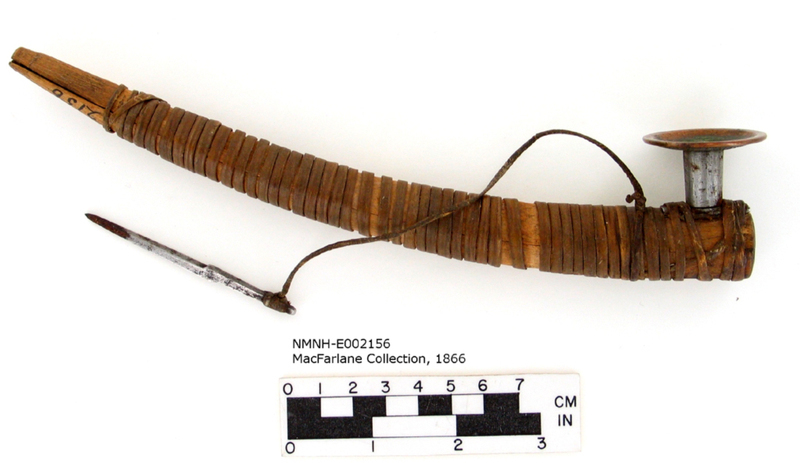
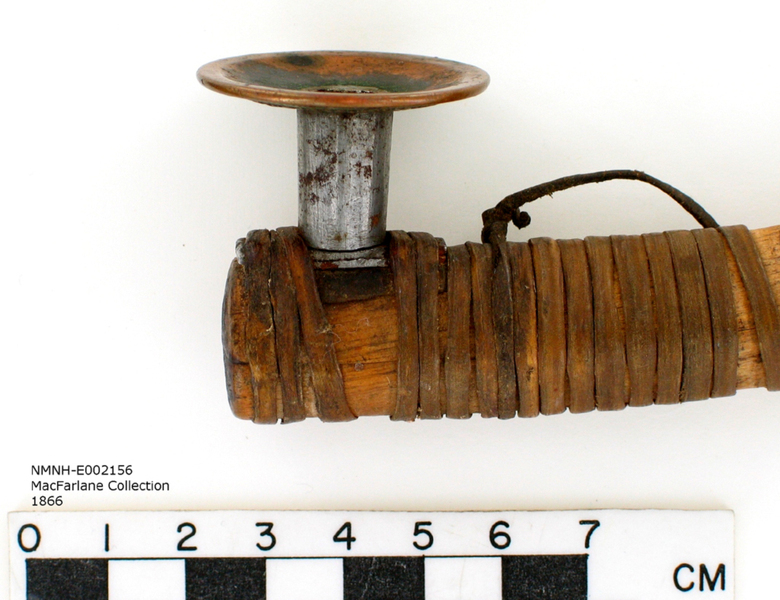
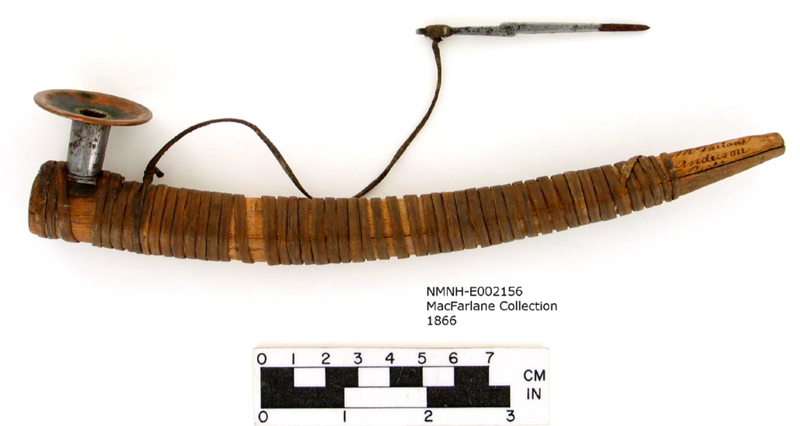
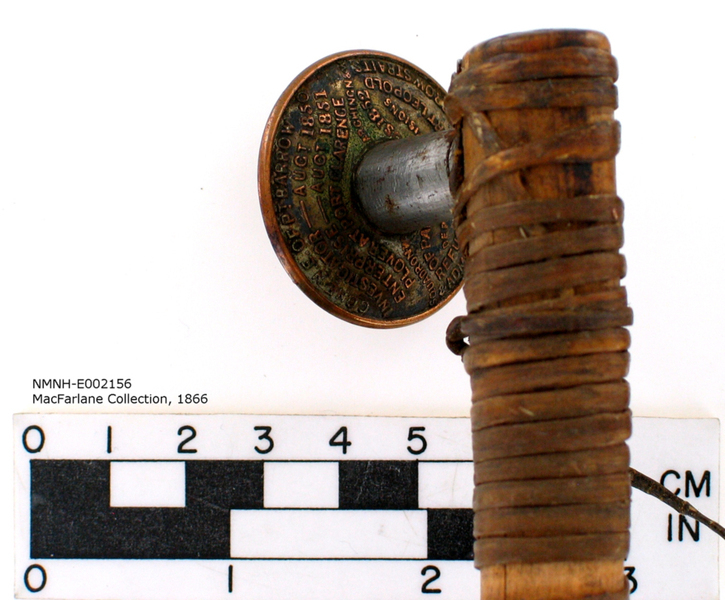
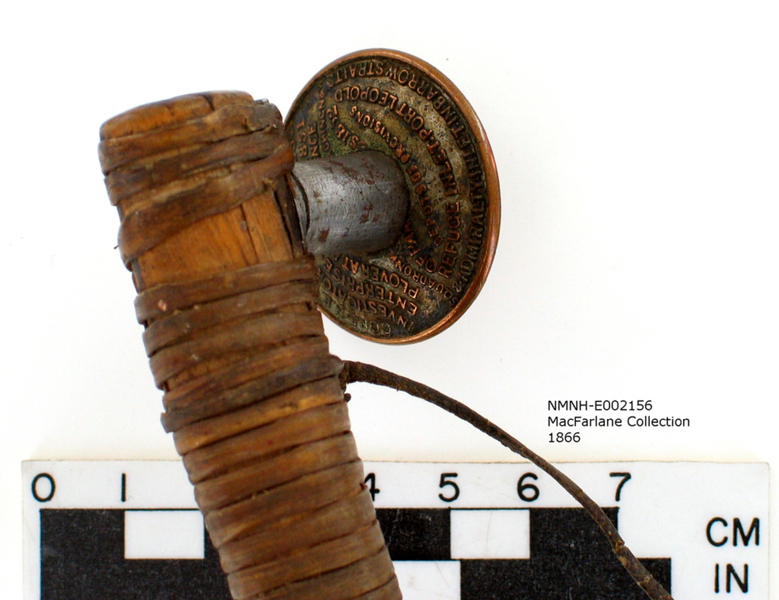
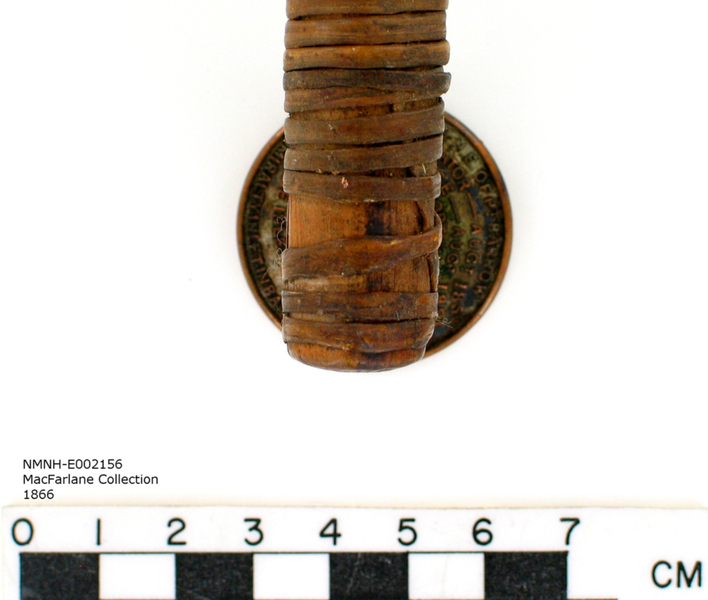
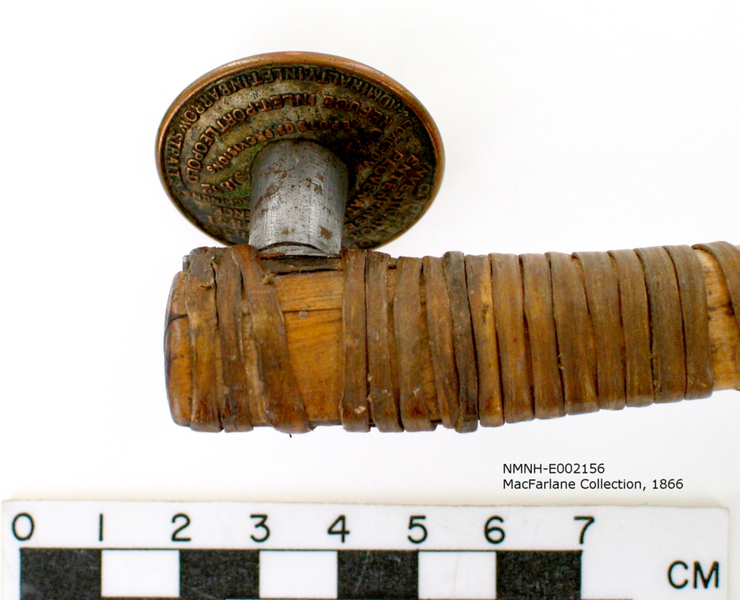
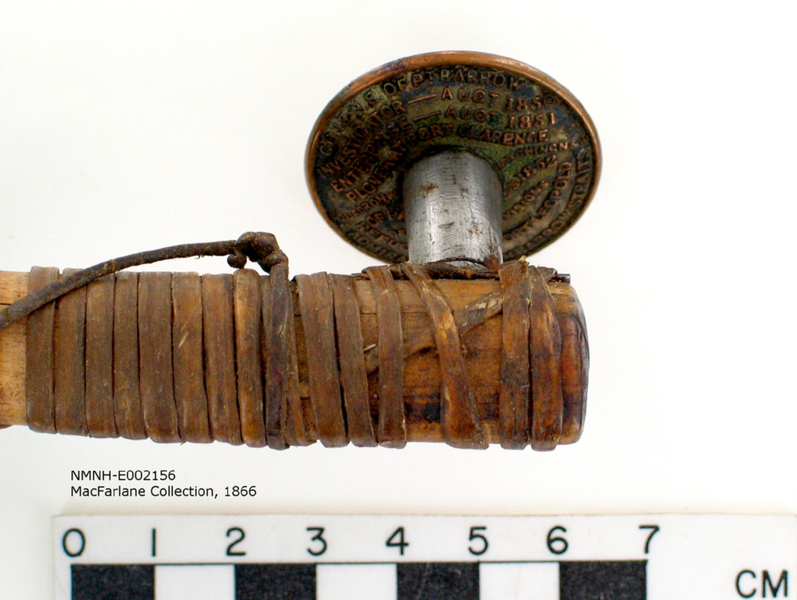
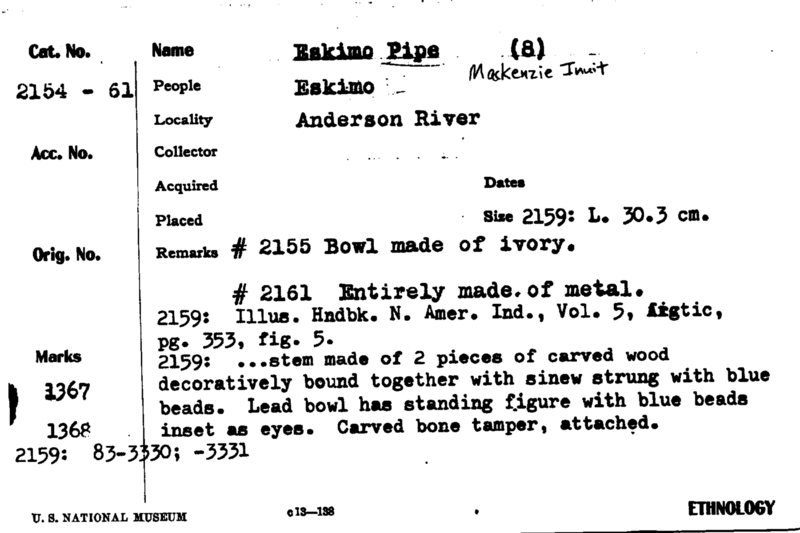
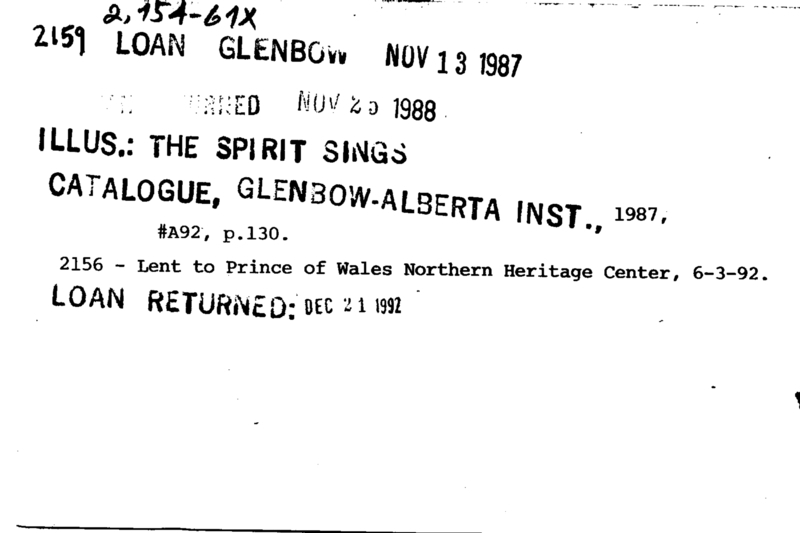
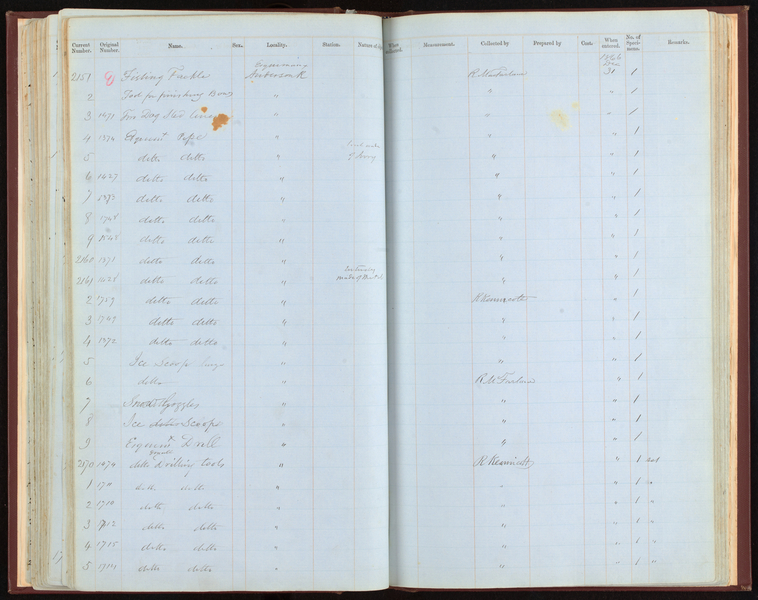
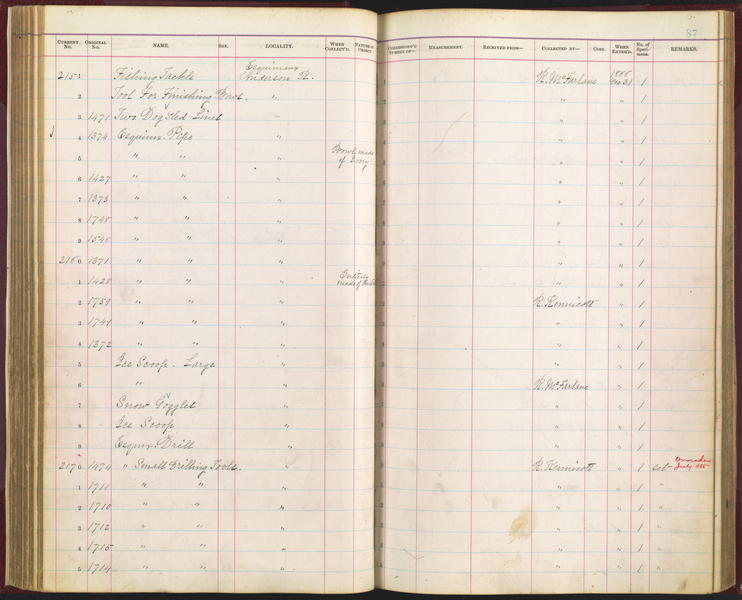
Notes
From Card: "LENT TO PRINCE OF WALES NORTHERN HERITAGE CENTER, 6-3-92. LOAN RETURNED: DEC 21 1992. "Source of the information below: Inuvialuit Pitqusiit Inuuniarutait: Inuvialuit Living History, The MacFarlane Collection website, by the Inuvialuit Cultural Resource Centre (ICRC), Inuvik, N.W.T., Canada (website credits here http://www.inuvialuitlivinghistory.ca/posts/12 ), entry on this artifact http://www.inuvialuitlivinghistory.ca/items/28 , retrieved 12-30-2019: Pipe with a metal bowl and a stem made of wood. The upper part of the bowl is made from a gilt metal button and is attached to a cylindrical post with a flange at its base, also made of metal. The bowl has a shallow concavity at the top, with a hole that continues through to the stem. The pipe stem is in two longitudinal sections that have been bound together with a lashing made of hide, which also wraps around a flange at the base of the bowl, fastening it to the stem. A pick made from two iron nails is attached to the pipe by a hide thong. The button used for the pipe bowl has a message in raised letters on the underside that has been partially obstructed where the post has been attached. The message on complete specimens of this button known from other source reads: GONE N.E. OF PT BARROW / INVESTIGATOR – AUGT 1850 / ENTERPRISE – AUGT 1851 / PLOVER AT PORT CLARENCE / 1852 [in center] / SQUADRON WITH STEAMERS SEARCHING N & W / OF PARRY ISLAND 1852 / DEPOTS OF PROVISIONS / REFUGE INLET . PORT LEOPOLD / & ADMIRALTY INLET IN BARROW STRAITS These so-called 'rescue buttons' (also known as 'postal buttons') were made by the British Navy and distrtibuted to Inuit during the search for the missing 1845 Franklin Expedition. The British Navy hoped would fall into the hands of survivors of the Franklin Expedition, informing them of where they could seek help. More information here: http://www.inuvialuitlivinghistory.ca/item_types/2: Inuvialuit first obtained pipes and tobacco in the 1800s through indigenous trade networks that stretched through Alaska and as far as Siberia. The MacFarlane Collection includes twenty pipes of this northern style. The bowls are made from metal, wood or stone, and with one exception the pipes have curved wooden stems split along their length and held together with a skin or sinew wrapping. Commonly a pick used for tamping tobacco and cleaning the bowl is attached to the pipe.Sue Rowley (Associate Professor of Anthropology at UBC) says "A number of years ago I was fortunate to see this pipe at the Smithsonian. I did some research on the medal that forms the rim of the pipe bowl. There is an unaltered version of the medal at the Scott Polar Research Institute in Cambridge, England."
Item History
- Made in Northwest Territories, Canada
- Collected in Northwest Territories, Canada
- Received from Roderick R. MacFarlane on December 21, 1866
What
- Name
- Pipe
- Identification Number
- E2156-0
- Type of Item
- pipe
Who
- Culture
- Eskimo, Inuit and Inuvialuk
- Received from
- Roderick R. MacFarlane
Where
- Holding Institution
- National Museum of Natural History
- Made in
- Northwest Territories, Canada
- Collected in
- Northwest Territories, Canada
When
- Acquisition Date
- on December 21, 1866
Other
- Accession Number
- 66A00090